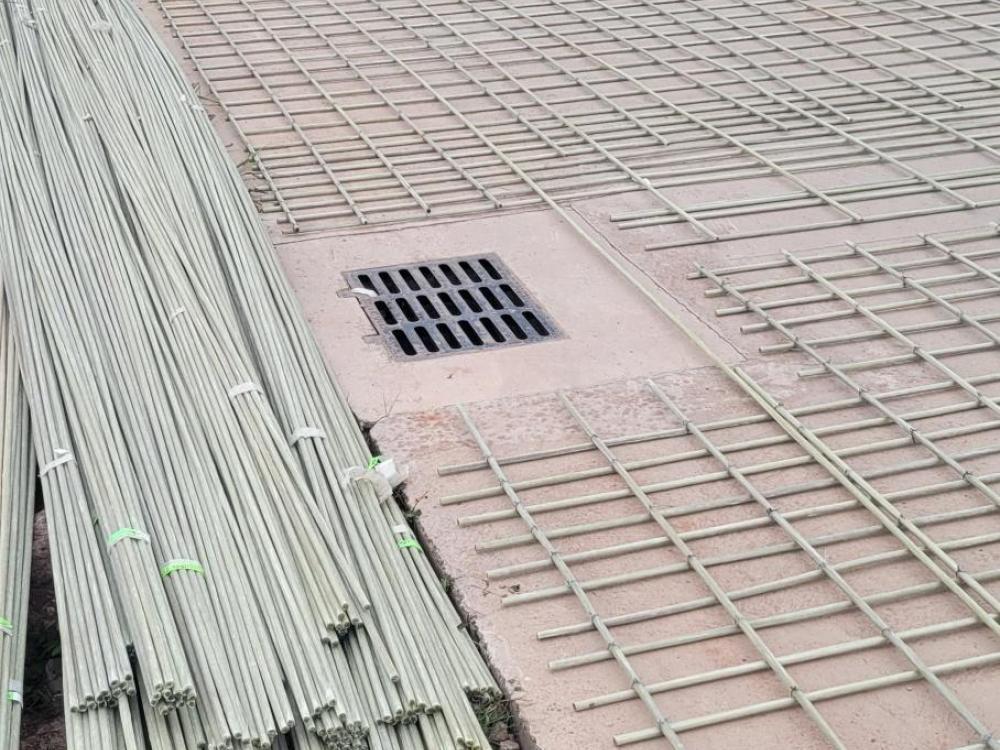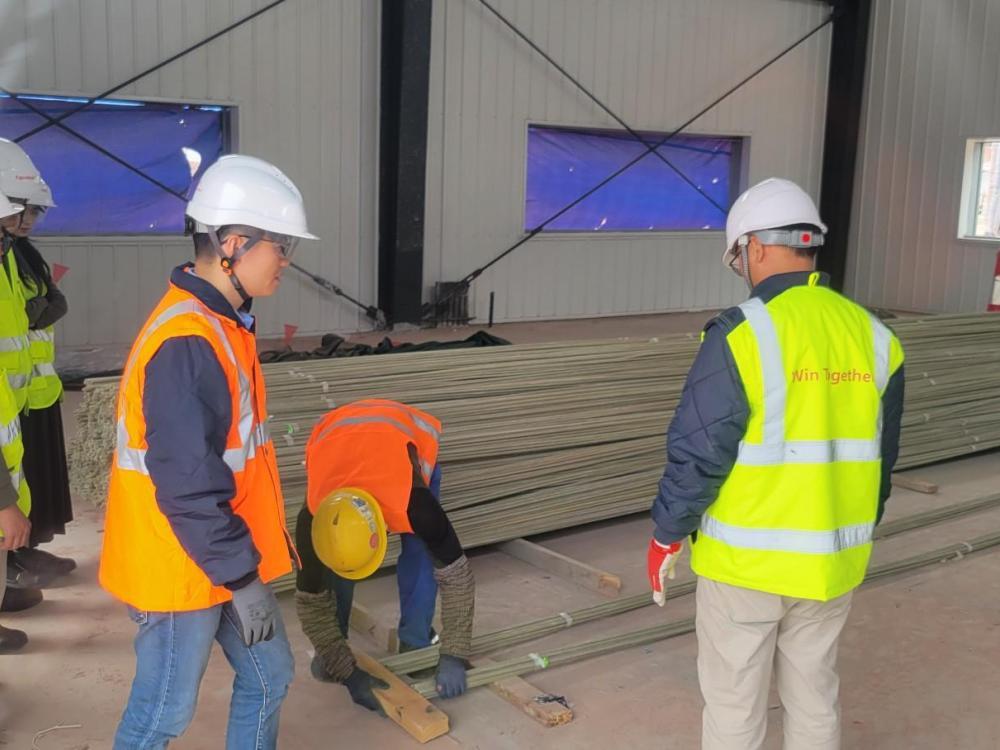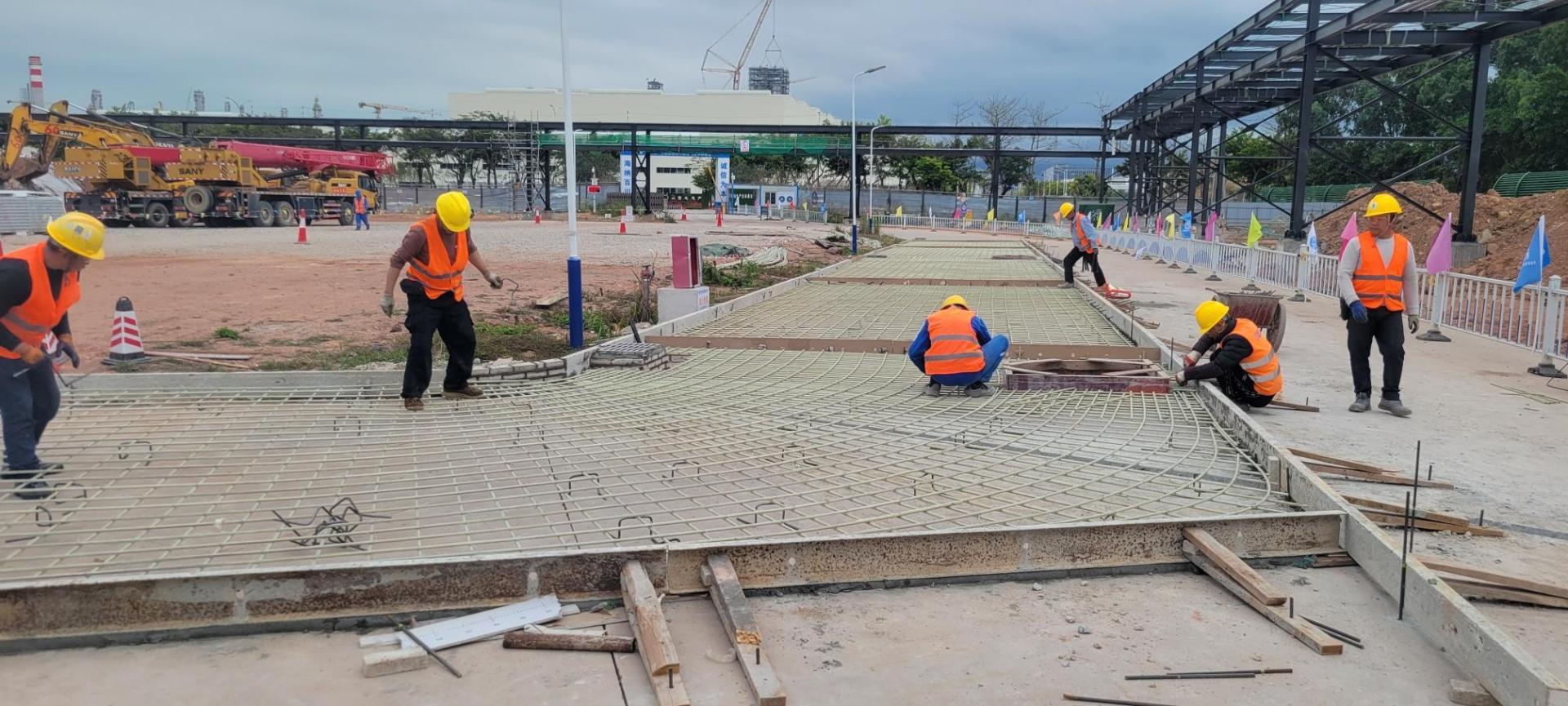- Compare productivity and performance of GatorBar and Steel
- #4 GatorBar (8” spacing) vs. #4 steel (12” spacing)
- 36% Improved Productivity
- Even with tighter spacing
- 26% to 50% improvements based on project complexities / complications
- Pre-Fab Grids - #4 GatorBar (8” spacing) vs. #4 steel (12” spacing)
- 2.5X Improvement
- 2.5X Improvement




Case Study: Implementation of GatorBar in Huizhou, China
Objective:
The primary objective was to evaluate the performance and productivity of GatorBar, a composite rebar, in comparison to traditional steel rebar across various construction projects in Huizhou, China.
Project Scope:
- Material Shipped: A total of 288,000 linear feet of #4 GatorBar was transported from Ahmeek, Michigan, to Huizhou, China.
- Project Application: Industrial Road Project
Methodology:
The study involved a direct comparison between traditional steel rebar and GatorBar, focusing on equipment requirements, handling, ease of use, and overall productivity.
Findings:
- Ease of Use & Reduced Preparation:
- Steel Rebar: Necessitated extensive equipment and site preparation, including tools for cutting, bending, and straightening. Handling required cranes, and the cutting process generated sparks.
- GatorBar: Came ready for use, significantly reducing setup time and equipment needs. It was easily handled on site without heavy machinery, enhancing workplace safety and efficiency.
- Productivity Gains:
- GatorBar exhibited a 36% productivity improvement over steel, with tighter spacing.
- Pre-fabricated modules of GatorBar delivered up to a 25-fold increase in efficiency compared to traditional steel placement.
- #4GatorBar (8” spacing) versus #4 steel (12” spacing) demonstrated a 36% productivity improvement even with tighter spacing.
- Pre-Fabricated Grids: #4 GatorBar (8” spacing) vs. #4 steel (12” spacing) showed a 2.5 times improvement. Pre-fabricated GatorBar vs. placed steel showed a 25x improvement.
- Project Success and Expansion Potential:
- The construction with GatorBar showed no visible structural issues after one month of implementation.
- The successful results have sparked interest in expanding the use of GatorBar to other construction areas, leveraging its logistical benefits and ease of handling.
Key Takeaways:
- Operational Efficiency: GatorBar's ease of transport and handling on site, along with reduced infrastructure demands, led to significant productivity enhancements.
- Safety and Convenience: The lighter weight and easier manipulation of GatorBar contributed to safer and more efficient handling processes.
- Future Implications: The success of this project highlights the broader adoption of GatorBar in China.
Conclusion:
The application of GatorBar in the Huizhou project demonstrated as a viable and advantageous alternative to traditional steel rebar. Its implementation not only fulfilled the immediate project objectives but also paved the way for broader industry acceptance and utilization in future construction endeavors. Plans are underway to extend its use to more applications, including warehouses, roads and parking lots, heavy and light road work, and large stadium ground runway base concrete.
